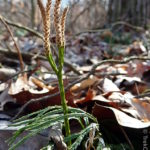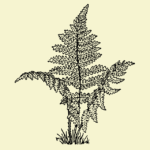During a recent hike to Trimmer Arch, I was startled when my peripheral vision caught sight of “smoke” rising up around my ankles. When I stopped and looked down, I realized that it wasn’t smoke, but instead clouds of spores.
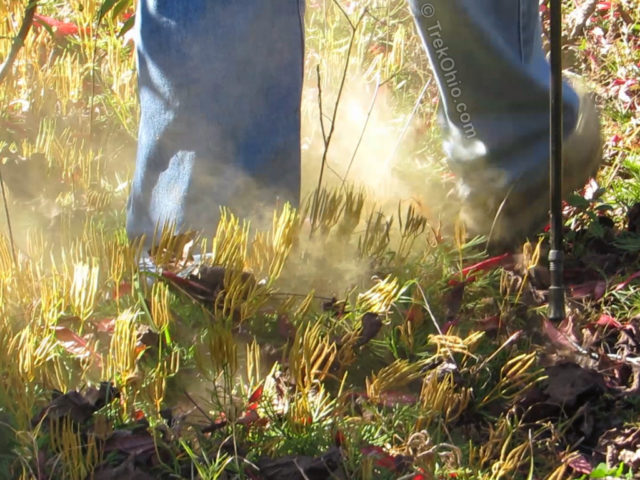
These ripe spores were being released by ground cedar. The spores produced by it and other members of its family have an exceptionally high fat content. People have utilized these spores industrially over the years, and in this capacity they are referred to collectively as “Lycopodium powder”. Among other things theses fatty spores have been used as:
- one of the fuels used to power the first internal combustion engine
- special-effects fireballs
- flash powder used for early cameras
- lubricants
For more information on the above, see an earlier post that I authored, Ground Cedar and Its Combustible Spores. It includes a video of a science teacher creating a demonstration fireball with the spores.
I have often seen ground cedar while hiking, but in most cases I have been hiking on a trail at a park or nature preserve, and the ground cedar has been located beside the trail. In this most recent case I was in the Paint Creek Wildlife Area where there are no trail, and this was the first time that I’ve walked through ground cedar that was ready to release its ripe spores.
In the photo below you can see the strobili (spore-bearing structures) while they are still green. They sort of look like two-pronged forks oriented in a handle-down, tines-up position.
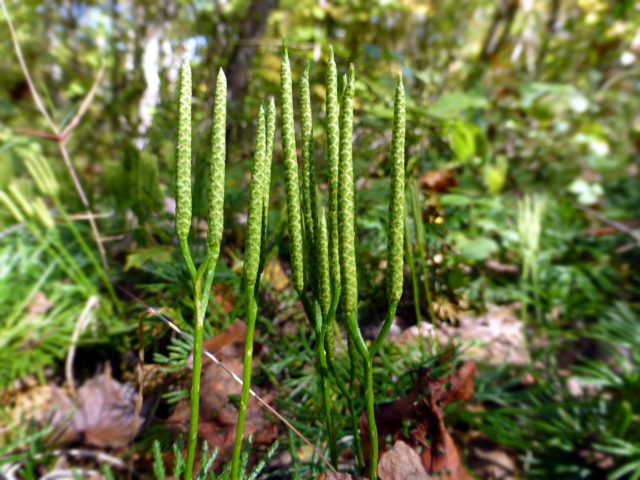
The ripe strobili take on a yellowish color like those below.
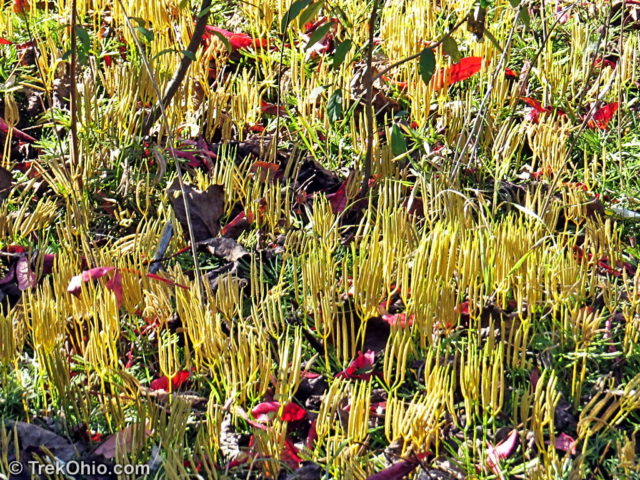
Below is a half-minute video showing the clouds of spores that were produced by walking through the ground cedar.
Additional information
- TrekOhio: Ground Cedar and Its Combustible Spores — in this article, I describe the many ways that people have used lycopodium powder.
- Wikipedia: Strobilus — this is the singular form of “strobili”. The article describes these spore-bearing structures.
- Wikipedia: Lycopodium powder
More on Spore-bearing Plants
